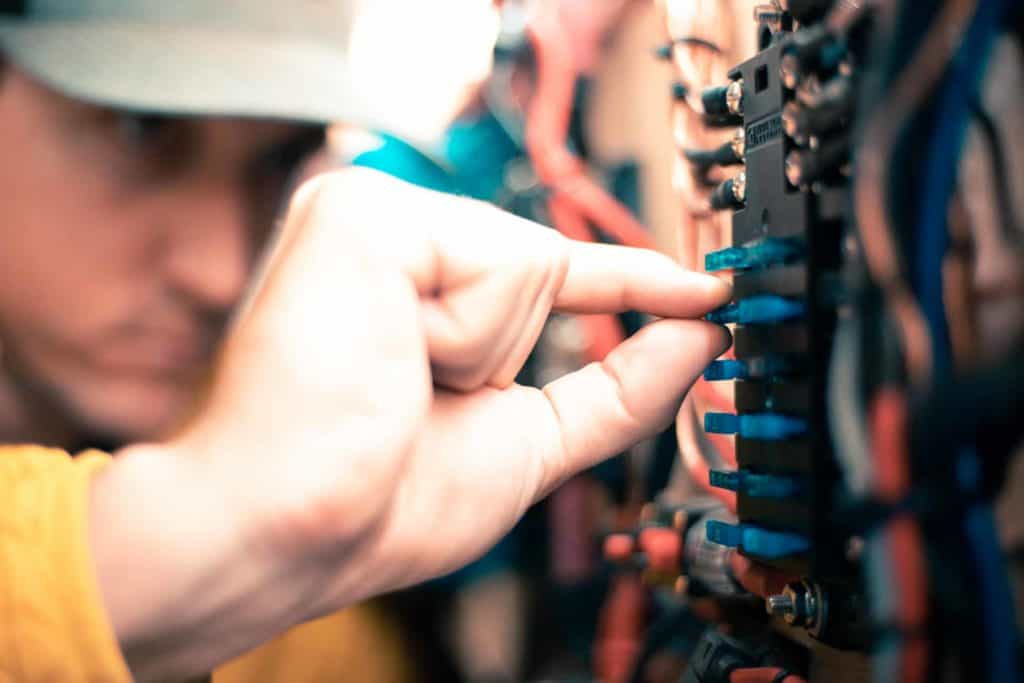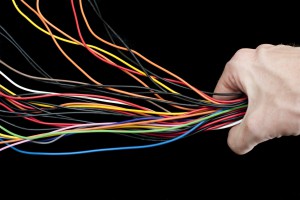The Theory Of Electrical Wiring
What Are the Signs of Home Electrical Problems?
Knowing the symptoms of an electrical problem can help you make repairs to prevent a dangerous situation that might lead to electrocution or property damage. You may be able to troubleshoot some of these electrical issues yourself, but be cautious when working with electricity. Many problems need diagnosis and repair from a professional electrician near you.
Circuit breaker problems
Circuit breakers are designed to trip when a circuit is overloaded. By shutting off the electrical supply, the breaker prevents wires from overheating and potentially starting a fire
Breakers can also trip when they become old. Occasional tripping can indicate simple overloads. Try plugging the appliance into a different circuit. If a circuit breaker trips frequently, you should consult an electrician.
Electrical shocks
If you feel a mild shock or tingle when touching an appliance, a ground fault in the appliance or improper electrical wiring may be the cause.
If you notice a shock after crossing a carpeted surface, it may be from static, which is common in the winter and not cause for concern

How To Solder: A Beginner’s Guide
Learning how to solder w/ proper soldering techniques is a fundamental skill every maker should master. In this tutorial, we outline the basics of soldering irons, soldering stations, types of solder, desoldering and safety tips. Whether you’re building a robot or working with Arduino, knowing how to solder will come in handy.
What Is Soldering?
If you were to take apart any electronic device that contains a circuit board, you’ll see the components are attached using soldering techniques. Soldering is the process of joining two or more electronic parts together by melting solder around the connection. Solder is a metal alloy and when it cools it creates a strong electrical bond between the parts. Even though soldering can create a permanent connection, it can also be reversed using a desoldering tool as described below.
Soldering Tools
The good thing about learning how to solder is the fact that you don’t need a lot to get started. Below we’ll outline the basic tools and materials you will need for most of your soldering projects.
Soldering Iron
A soldering iron is a hand tool that plugs into a standard 120v AC outlet and heats up in order to melt solder around electrical connections. This is one of the most important tools used in soldering and it can come in a few variations such as pen or gun form. For beginners, it’s recommended that you use the pen style soldering iron in the 15W to 30W range. Most soldering irons have interchangeable tips that can be used for different soldering applications. Be very cautious when using any type of soldering iron because it can heat up to 896′ F which is extremely hot.
Soldering Station
A soldering station is a more advanced version of the basic standalone soldering pen. If you are going to be doing a lot of soldering, these are great to have as they offer more flexibility and control. The main benefit of a soldering station is the ability to precisely adjust the temperature of the soldering iron which is great for a range of projects. These stations can also create a safer workspace as some include advanced temperature sensors, alert settings and even password protection for safety.
HOW-TO WIRE 12V ACCESSORIES IN A DIY CAMPER VAN ELECTRICAL SYSTEM
The electrical system in a DIY Camper Van is a bit pointless if you don’t have anything to power, so let’s learn how to hard-wire plugs, fans, and other accessories into your camper.
Quick note before we get started. This is just one part of an overarching “How to Install a DIY Camper Van Electrical System” series. If you’ve just stumbled on this article directly without seeing that, there are likely some things we’ve already covered. If you want to check out that step by step guide
Also, we have interactive solar wiring diagrams that are a complete, A to Z solution for teaching you exactly what parts go where, what size wires to use, fuse size recommendations, wire lug sizes, and all kind of other stuff to help save you time and frustration.
The 12v Distribution Block connects into your busbar and the one I like has enough spaces for 12 circuits and can power a max of 100 amps at a time combined between all the branch, or accessory circuits.
12V WIRE COLOR
Power, Positive, and Hot (these all mean the same thing and can be used interchangeably) wires in 12v setups are typically red. Since you are likely starting this from scratch, I recommend keeping it consistent and going with red for the positive wires.
How Power Grids Work
Electrical power is a little bit like the air you breathe: You don’t really think about it until it is missing. Power is just “there,” meeting your every need, constantly. It is only during a power failure, when you walk into a dark room and instinctively hit the useless light switch, that you realize how important power is in your daily life. You use it for heating, cooling, cooking, refrigeration, light, sound, computation, entertainment… Without it, life can get somewhat cumbersome
The grid is quite public — if you live in a suburban or rural area, chances are it is right out in the open for all to see. It is so public, in fact, that you probably don’t even notice it anymore. Your brain likely ignores all of the power lines because it has seen them so often. In this article, we will look at all of the equipment that brings electrical power to your home. The next time you look at the power grid, you will be able to really see it and understand what is going on!
The Power Plant
Electrical power starts at the power plant. In almost all cases, the power plant consists of a spinning electrical generator. Something has to spin that generator — it might be a water wheel in a hydroelectric dam, a large diesel engine or a gas turbine. But in most cases, the thing spinning the generator is a steam turbine
No matter what it is that spins the generator, commercial electrical generators of any size generate what is called 3-phase AC power. To understand 3-phase AC power, it is helpful to understand single-phase power first.
The Power Plant: Alternating Current
Single-phase power is what you have in your house. You generally talk about household electrical service as single-phase, 120-volt AC service. If you use an oscilloscope and look at the power found at a normal wall-plate outlet in your house, what you will find is that the power at the wall plate looks like a sine wave, and that wave oscillates between -170 volts and 170 volts (the peaks are indeed at 170 volts; it is the effective (rms) voltage that is 120 volts). The rate of oscillation for the sine wave is 60 cycles per second. Oscillating power like this is generally referred to as AC, or alternating current. The alternative to AC is DC,

electrical wire colors do matter
Electrical wire colors probably don’t mean anything to the average homeowner, but those distinctions are actually very important and knowing the proper color coding is essential when performing electrical work. Each color serves a different purpose and you should be aware that all wires, no matter their function or color, can carry a current at some point so they should be handled carefully.
Green, green with a yellow stripe, or bare copper
These are ground wires that keep you, your appliances, and your home safe from electrical fires. Their purpose is to provide a path for a circuit’s electrical current if a device shorts out or trips a breaker.
Black
Black indicates a hot or live wire that’s carrying a current and is used for power in all circuits. These wires feed an outlet or switch and are often used as switch legs (the connection that runs from the switch to the electrical load).
Red
This will be your second hot wire when doing a 220-volt installation for large appliances such as a stove, clothes dryer, or air conditioner. Red can also be the interconnecting electrical wire between two hardwired smoke detectors.
Blue & Yellow
These two colors are hot wires usually pulled in conduit for common plug-in electrical devices. Blue wires are used as travelers, usually on three- or four-way switches (controlling a light from multiple locations) or as switch legs for things such as fans or lights. Yellow wires are almost always used as switch legs for outlets, fans, or lights.
White or Gray
White or gray indicates a neutral wire, which provides the return path for the current carried by the hot wires and is grounded within the electrical panel.